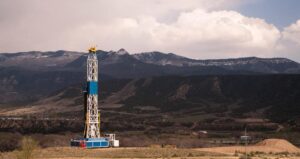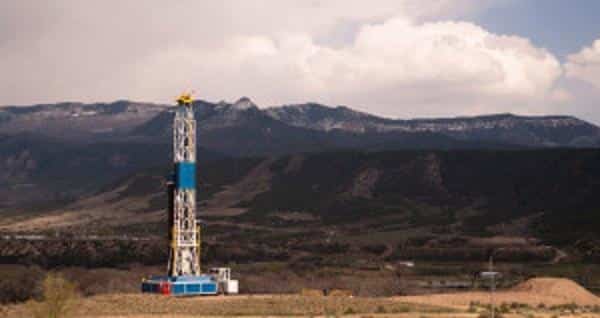 A recent article published by Rocky Mountain PBS, highlights an ancient disease that oil and gas workers are currently facing. The disease—silicosis—is an incurable, yet preventable disease, that is caused by breathing in particles of sand, or respirable crystalline silica. Breathing in too much silica can in turn cause lung cancer, and even death. It’s similar to breathing in asbestos, which can also lead to lung cancer. The reason oil and gas workers are susceptible to breathing in silica is the use of sand in hydraulic fracturing.
A recent article published by Rocky Mountain PBS, highlights an ancient disease that oil and gas workers are currently facing. The disease—silicosis—is an incurable, yet preventable disease, that is caused by breathing in particles of sand, or respirable crystalline silica. Breathing in too much silica can in turn cause lung cancer, and even death. It’s similar to breathing in asbestos, which can also lead to lung cancer. The reason oil and gas workers are susceptible to breathing in silica is the use of sand in hydraulic fracturing.
OSHA Alert and Study
The Occupational Safety and Health Administration (OSHA) previously published an alert regarding worker exposure to silica during hydraulic fracturing. The alert notes that field studies show that workers may be exposed to dust with high levels of respirable crystalline silica (silica) during hydraulic fracturing. The health and safety hazards workers may face include the following injuries:
- Silicosis: a lung disease where lung tissue containing trapped silica particles becomes inflamed and scarred and reduces the lungs’ ability to take in oxygen.
- Lung Cancer
- Tuberculosis
- Chronic Obstructive Pulmonary Disease
- Kidney and Autoimmune Disease
Additional information regarding occupational exposure can be found in a 2013 study.
Symptoms of Silicosis
Silicosis is classified into three types, which includes chronic/classic, accelerated, and acute. Chronic/Classic is the most common type, and occurs 10-20 years after moderate to low exposures to silica. Symptoms may not be obvious, however, as the disease progresses the following symptoms may occur:
- Shortness of breath
- Fatigue
- Cough
- Respiratory failure
Acute silicosis occurs after only a few months or years after exposure at extremely high levels. Symptoms can include the following:
- Sever shortness of breath
- Weakness
- Weight loss
What can be done?
OSHA’s alert states that “one way to reduce silica exposures is to use alternative proppants (e.g., sintered bauxite, ceramics, resin-coated sand) where feasible.” Other ways to prevent or lessen exposure are included in the alert, and include short term work practices and procedural changes and practices that involve equipment changes.
According to the Rocky Mountain PBS article, many companies in the fracking industry have changed the handling of fracking sand. New innovation and technology is looking to protect workers while boosting efficiency on oil and gas fields. Specifically, workers are no longer moving sand on its own as doing so allowed for greater exposure to breathing in silica particles. Companies are having workers keep the sand in a closed container and when a crew is ready for the sand, they release it from the bottom of the box using gravity, not air pumps, and thus, decrease exposure.
Hopefully, this danger can continue to be controlled and monitored for the workers on oil and gas fields.
If you enjoyed this blog, you may like these Workers’ Comp blogs:



